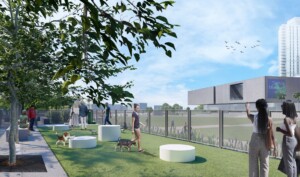Done well, visitor research can guide powerful strategic decisions for the future too, says Alexa Magladry of Morris Hargreaves McIntyre. Here’s how.
The call to collect data on our visitors is getting louder and louder. There is a growing recognition of the importance of being a data-driven organization, and boards and leadership teams are looking for clear evidence of impact. This comes with mounting pressure on visitor attractions to use hard data to make strategic decisions across the organization.
Many visitor attractions just starting out on the journey towards being a data-driven organization being with impact evaluation – perhaps looking at to what extent a current exhibition or program has satisfied visitors or met its intended goals. Impact evaluation research can be valuable for this purpose. However, it often only provides a rear-view mirror picture, looking at what has already happened, with little insight or recommendations as to what could be applied to future projects.
With a few essential considerations, you can ensure your research can not only assess the impact of what you’re doing but also give you the rich insights you need to inform strategic decision-making across your whole organization. This will help you look forwards, rather than backward.
Connect your visitor research with your strategic plan from the beginning
When starting a new visitor survey, there can be a temptation to ask every question under the sun. We get it, it’s exciting to be able to hear from your visitors! Additionally, there can be pressure from other departments to ask questions relevant to them. However, it’s important to involve other departments in your process. One or two departments (e.g. marketing or operations) often monopolize traditional visitor surveys. So, it’s vital that every department has skin in the game.
So where should you start?
- To ensure you’re only asking essential questions, identify the problem or question you’re trying to address. Don’t collect any data that won’t help you do this. As a sector, we often spend a lot of time collecting data that we don’t use. This can be a waste of our efforts. Ensuring the questions you’re asking directly relate to your identified outcomes and outputs is key to ensuring you’re meeting your strategic goals.
- Having a strategic framework for evaluation that outlines your goals, strategies, intended outcomes and measures will ensure your research is laser-focused.
- Put real thought into what you plan on doing with the data for each question to make sure you’re not asking unnecessarily personal questions. For example, if you don’t have a plan as to what you’ll do about the income data of your visitors, it may be worth removing.
- Involve other departments from the outset. Everyone in every department of your organization is operating on at least one assumption or hunch about their visitors – encourage true buy-in to your research program by creating an ‘insight wish list’, asking other departments what one piece of insight they want to know about their audiences to help them make better decisions.
Ensure your data truly represents your visitors
Collecting data that is not representative of your visitors may do more harm than good. Relying on data that doesn’t accurately reflect who is visiting is only giving you one part of the picture. And it could lead to making uninformed decisions. To ensure your data is representative, consider:
- A rolling, ‘little and often’ approach. While ‘snapshot’ research can be useful and require lower staff commitment, a rolling approach over the course of the year is the gold standard and gives you the complete picture of your year. The added bonus? You can build up a longitudinal picture as each year’s data is gathered, providing insight into long-term trends.
- Random sampling. For many organizations just starting visitor research, a self-selection method (ie setting up a survey kiosk or sending out an online survey via post-visit email) can be a good start as it is less intensive on staff time. However, self-selection can often attract people with polarized opinions about their experience, which can lead to skewed data. A random sampling method (approaching visitors at random on exit) means that every visitor has an equal chance to be surveyed, and, crucially, provides a more representative, balanced sample.
- Weighting your data. In MHM’s international gold-standard rolling research program, Visitor 360°, we take representation one step further by weighing the sample we collect about what you already know about your visitors. This will help account for visitors that may not be as likely to take part in a survey, such as families. While this step may not be easily done in-house, it can be worth bringing in expert help for that extra layer of robust representation for real confidence in your data.
Dig deeper with psychographics to really understand your audiences
Including questions that segment your visitors based on their deep-seated values or motivations can help you influence behavior and achieve your audience development goals.
It can be helpful to know the demographics or behavior of your visitors. However, these things don’t go deep into the ‘why’ of their engagement with you. They are not good predictors of future behavior. Using a psychographic approach, such as Culture Segments, or other motivation-based segmentations (i.e. John Falk’s museum visitor identities) provides you with deep insight into your audience’s needs and how you can meet these.
Consider a sector expert to help make sense of your data
When it comes time to analyzing your data and pulling out the key insights, sometimes a neutral, outside eye can be immensely valuable. While you are the experts on your audience, a sector expert can bring in sector-wide trends and invaluable context to ground your insights and suggest actionable, strategic recommendations that will help you make real changes in your organization.
If you’d like to learn more about how to power up your visitor research, you can register your interest for MHM’s upcoming free webinar, or learn more about Visitor 360° here.








